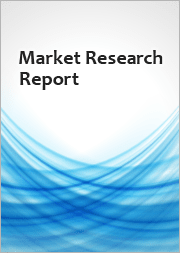
|
시장보고서
상품코드
1529438
세계의 구속성 펩타이드 의약품 시장 : 시장 규모 - 용도별, 유형별, 지역별, 예측(2022-2032년)Global Constrained Peptide Drugs Market Size Study, by Application (Institutes of Biology, Hospitals), by Type (Disulfide-Rich Peptides, Cyclic Peptides), and Regional Forecasts 2022-2032 |
||||||
세계의 구속성 펩타이드 의약품 시장 규모는 2023년에 약 12억 4,000만 달러로 평가되었고, 2024년부터 2032년까지 예측기간에 15.00% 이상의 견실한 성장률로 추이할 것으로 예측되고 있습니다.
구속성 펩타이드 의약품은 짧은 아미노 사슬을 갖는 펩타이드를 사용하여 제조되고 분자내 공유 결합에 의해 조절되는 초분자 구조를 특징으로 합니다. 이들 펩타이드는 종래의 것에 비해 우수한 물리화학적 및 생화학적 특성을 부여하도록 개발되었으며, 다양한 최종 용도에서 활용도가 높습니다. 이러한 약물은 안정성, 생체이용률, 표적 분자에 대한 결합 친화도를 높이기 위해 고리화 및 비천연 아미노산의 통합과 같은 구조적 제약을 추가하여 설계됩니다. 구조적 제약은 펩타이드가 신속하게 분해되거나 체외로 배출되는 것을 방지하고 치료 효과와 특이성을 향상시킵니다.
구속성 펩타이드 의약품 시장은 암, 대사성 질환, 자가면역 질환 등의 만성 질환의 유병률의 상승에 의해 보다 효과적이고 표적화된 치료법의 개척이 필요하고 있으며, 구속성 펩타이드는 높은 특이성과 효능을 위해 적당한 몇몇 요인에 의해 견인됩니다. 게다가, 펩타이드 합성 및 설계 기술의 진보에 의해 보다 안정적이고 강력한 펩타이드 의약품의 창제가 가능하게 되어, 치료의 가능성과 응용 범위가 확대되고 있습니다. 게다가 관민 양부문에 의한 바이오 의약품 연구개발에 대한 투자 증가는 제약이 있는 펩타이드 의약품의 발견과 상업화를 가속화하고 있습니다. 이 외에도 특히 북미 및 유럽과 같은 지역에서는 혁신적인 펩타이드 치료제의 신속한 승인과 시장 진입을 촉진하는 좋은 규제 환경이 갖추어져 있습니다.
게다가 제약회사와 학술기관의 협력 관계는 혁신과 새로운 펩타이드 기반 치료법의 개발을 촉진하고 있습니다. 이러한 파트너십은 종종 드래그 디자인과 약물전달 메커니즘에서 획기적인 혁신을 가져오고 시장 성장을 더욱 강화하고 있습니다. 그러나 펩타이드의 제약에 따른 높은 생산 비용 및 복잡한 제조 공정, 기존의 저분자 의약품 및 생물학적 제제와의 경쟁, 개발 및 상업 유통을 위한 높은 투자 비용 등의 과제에도 직면하고 있습니다.
본 조사에서는 아시아태평양, 북미, 유럽, 라틴아메리카, 중동 및 아프리카를 주요 지역으로 삼았습니다. 북미는 세계의 구속성 펩타이드 의약품 시장을 독점하고 있으며, 이 분야에서 가장 빠르게 성장하는 지역이기도 합니다. 이 이점과 급성장에는 몇 가지 요인이 있습니다. 북미, 특히 미국은 연구 개발에 대한 많은 투자, 고급 건강 관리 인프라 및 혁신에 대한 강한 헌신을 특징으로 하는 견고한 바이오 의약품 산업을 보유하고 있습니다. 기타 혜택은 미국 식품의약국(FDA) 등의 혁신적인 치료에 대한 유리한 규제 프레임워크과 신속한 승인 과정을 포함합니다. 암, 당뇨병, 심혈관 질환 등의 만성 질환의 이환율이 높기 때문에 효과적인 표적 치료제에 대한 수요가 높아지고 있습니다. 특이성과 효능으로 알려진 구속성 펩타이드 의약품은 이러한 병리를 다루기 위해 점점 더 요구되고 있습니다. 또한, 북미의 학술 및 연구 기관의 강력한 네트워크는 펩타이드 의약품 연구의 지속적인 발전에 기여하고 학계와 산업의 협력 관계를 촉진하고 있습니다. 마지막으로, 건강 관리 연구를 위한 정부와 민간의 엄청난 자금 지원과 생명 공학 신흥 기업에 대한 벤처 캐피탈 투자의 존재가 시장 성장을 더욱 강화하고 있습니다.
목차
제1장 세계의 구속성 펩타이드 의약품 시장의 주요 요약
- 세계의 구속성 펩타이드 의약품 시장 규모 및 예측(2022-2032년)
- 지역별 개요
- 부문별 개요
- 용도별
- 유형별
- 주요 동향
- 경기 후퇴의 영향
- 애널리스트의 결론 및 제안
제2장 세계의 구속성 펩타이드 의약품 시장 정의 및 조사의 전제조건
- 조사 목적
- 시장의 정의
- 조사의 전제조건
- 포함 및 제외
- 제한 사항
- 공급측 분석
- 가용성
- 인프라
- 규제 환경
- 시장 경쟁
- 경제성(소비자의 시점)
- 수요측 분석
- 규제 프레임워크
- 기술의 진보
- 환경에 대한 배려
- 소비자의 의식 및 수용
- 조사 방법
- 조사 대상년도
- 환율 변환율
제3장 세계의 구속성 펩타이드 의약품 시장 역학
- 시장 성장 촉진요인
- 신약 연구 개발 투자 확대
- 치명적인 질환에 대한 효과적인 치료법의 개발에 주목 증가
- 암 환자 증가에 의한 연구의 촉진
- 시장의 과제
- 산업의 초기 단계
- 높은 투자비용
- 개발 인프라 부족
- 시장 기회
- 세계의 의료 액세스 증가
- 맞춤형 의료에 대한 수요의 급증
- 원격의료 및 첨단기술의 성장
제4장 세계의 구속성 펩타이드 의약품 시장 분석
- Porter's Five Forces 모델
- 공급기업의 협상력
- 구매자의 협상력
- 신규 참가업체의 위협
- 대체품의 위협
- 경쟁 기업간 경쟁 관계
- Porter's Five Forces 모델에 대한 미래적 접근
- Porter's Five Forces의 영향 분석
- PESTEL 분석
- 정치
- 경제
- 사회
- 기술
- 환경
- 법률
- 주요 투자 기회
- 주요 성공 전략
- 파괴적 동향
- 산업 전문가의 시점
- 애널리스트의 결론 및 제안
제5장 세계의 구속성 펩타이드 의약품 시장 규모 및 예측 : 용도별(2022-2032년)
- 부문 대시보드
- 세계의 구속성 펩타이드 의약품 시장의 용도별 수익 동향 분석(2024년, 2032년)
- 생물학 연구소
- 병원
제6장 세계의 구속성 펩타이드 의약품 시장 규모 및 예측 : 유형별(2022-2032년)
- 부문 대시보드
- 세계의 구속성 펩타이드 의약품 시장의 유형별 수익 동향 분석(2024년, 2032년)
- 디설파이드리치 펩타이드(DRPs)
- 환상 펩타이드
제7장 세계의 구속성 펩타이드 의약품 시장 규모 및 예측 : 지역별(2022-2032년)
- 북미
- 미국
- 캐나다
- 유럽
- 영국
- 독일
- 프랑스
- 이탈리아
- 스페인
- 기타 유럽
- 아시아태평양
- 중국
- 인도
- 일본
- 호주
- 한국
- 기타 아시아태평양
- 라틴아메리카
- 중동 및 아프리카
제8장 경쟁 정보
- 주요 기업의 SWOT 분석
- 주요 시장 전략
- 기업 프로파일
- Aileron Therapeutics, Inc.
- 주요 정보
- 개요
- 재무(데이터의 이용가능성에 따름)
- 제품 개요
- 시장 전략
- Bicycle Therapeutics plc
- Protagonist Therapeutics Inc.
- Santhera Pharmaceuticals
- Union Chimique Belge SA(UCB)
- Creative Peptides
- Biosynth(Pepscan)
- Pepticom Ltd.
- PeptiDream Inc.
- Bio-Synthesis Inc.
- CPC Scientific Inc.
- Circle Pharma
- Zealand Pharma
- Chugai Pharmaceutical Co. Ltd.
- Spexis AG
- Aileron Therapeutics, Inc.
제9장 조사 과정
AJY 24.08.19The Global Constrained Peptide Drugs Market is valued at approximately USD 1.24 billion in 2023 and is anticipated to grow with a healthy growth rate of more than 15.00% over the forecast period 2024-2032. Constrained peptide drugs are produced using peptides with short amino chains and are characterized by their supermolecular structure controlled through intramolecular covalent bonds. These peptides are developed to impart superior physicochemical and biochemical properties compared to traditional counterparts, making them highly versatile in various end-use applications. These drugs are designed with structural constraints, such as cyclization or the incorporation of non-natural amino acids, to enhance their stability, bioavailability, and binding affinity to target molecules. The structural constraints prevent the peptides from rapidly degrading or being cleared from the body, thereby improving their therapeutic efficacy and specificity.
The constrained peptide drugs market is being driven by several factors such as rising prevalence of chronic diseases such as cancer, metabolic disorders, and autoimmune diseases necessitates the development of more effective and targeted treatments, for which constrained peptides are well-suited due to their high specificity and potency. Moreover, advancements in peptide synthesis and design technologies are enabling the creation of more stable and potent peptide drugs, thereby expanding their therapeutic potential and application range. Additionally, increased investment in biopharmaceutical research and development by both public and private sectors is accelerating the discovery and commercialization of constrained peptide drugs. This is complemented by a favorable regulatory environment, particularly in regions like North America and Europe, which facilitates faster approval and market entry for innovative peptide therapeutics.
Moreover, collaborations between pharmaceutical companies and academic institutions are fostering innovation and the development of new peptide-based therapies. These partnerships often lead to breakthroughs in drug design and delivery mechanisms, further propelling market growth. However, the market also faces challenges such as high production costs and complex manufacturing processes associated with constrained peptides and competition from existing small-molecule drugs and biologics, as well as high investment costs for development and commercial distribution.
The key regions considered in the study include Asia Pacific, North America, Europe, Latin America, and the Middle East and Africa. North America dominates the global constrained peptide drugs market and is also the fastest-growing region in this sector. Several factors drive this dominance and rapid growth. North America, particularly the United States, has a robust biopharmaceutical industry characterized by substantial investment in research and development, advanced healthcare infrastructure, and a strong focus on innovation. Additionally, the region benefits from favorable regulatory frameworks and expedited approval processes for innovative treatments by agencies such as the U.S. Food and Drug Administration (FDA). High prevalence of chronic diseases, including cancer, diabetes, and cardiovascular disorders, increases the demand for effective and targeted therapies. Constrained peptide drugs, known for their specificity and potency, are increasingly sought after to address these medical conditions. Moreover, North America's strong network of academic and research institutions contributes to ongoing advancements in peptide drug research, fostering collaboration between academia and industry. Lastly, significant government and private funding for healthcare research and the presence of venture capital investments in biotech startups further support market growth.
Major market players included in this report are:
- Union Chimique Belge S.A. (UCB)
- Aileron Therapeutics Inc.
- Zealand Pharma
- Bio-Synthesis Inc.
- Spexis AG
- Bicycle Therapeutics plc
- Circle Pharma
- Creative Peptides
- PeptiDream Inc.
- Pepticom Ltd.
- Protagonist Therapeutics Inc.
- Chugai Pharmaceutical Co. Ltd.
- Biosynth (Pepscan)
- Santhera Pharmaceuticals
- CPC Scientific Inc.
The detailed segments and sub-segment of the market are explained below:
By Application:
- Institutes of Biology
- Hospitals
By Type:
- Disulfide-Rich Peptides (DRPs)
- Cyclic Peptides
By Region:
- North America
- U.S.
- Canada
- Europe
- UK
- Germany
- France
- Italy
- Spain
- ROE
- Asia Pacific
- China
- India
- Japan
- Australia
- RoAPAC
- Latin America
- Brazil
- Mexico
- RoLA
- Middle East & Africa
- Saudi Arabia
- South Africa
- RoMEA
Years considered for the study are as follows:
- Historical year - 2022
- Base year - 2023
- Forecast period - 2024 to 2032
Key Takeaways:
- Market Estimates & Forecast for 10 years from 2022 to 2032.
- Annualized revenues and regional level analysis for each market segment.
- Detailed analysis of geographical landscape with Country level analysis of major regions.
- Competitive landscape with information on major players in the market.
- Analysis of key business strategies and recommendations on future market approach.
- Analysis of competitive structure of the market.
- Demand side and supply side analysis of the market.
Table of Contents
Chapter 1. Global Constrained Peptide Drugs Market Executive Summary
- 1.1. Global Constrained Peptide Drugs Market Size & Forecast (2022-2032)
- 1.2. Regional Summary
- 1.3. Segmental Summary
- 1.3.1. By Application
- 1.3.2. By Type
- 1.4. Key Trends
- 1.5. Recession Impact
- 1.6. Analyst Recommendation & Conclusion
Chapter 2. Global Constrained Peptide Drugs Market Definition and Research Assumptions
- 2.1. Research Objective
- 2.2. Market Definition
- 2.3. Research Assumptions
- 2.3.1. Inclusion & Exclusion
- 2.3.2. Limitations
- 2.3.3. Supply Side Analysis
- 2.3.3.1. Availability
- 2.3.3.2. Infrastructure
- 2.3.3.3. Regulatory Environment
- 2.3.3.4. Market Competition
- 2.3.3.5. Economic Viability (Consumer's Perspective)
- 2.3.4. Demand Side Analysis
- 2.3.4.1. Regulatory frameworks
- 2.3.4.2. Technological Advancements
- 2.3.4.3. Environmental Considerations
- 2.3.4.4. Consumer Awareness & Acceptance
- 2.4. Estimation Methodology
- 2.5. Years Considered for the Study
- 2.6. Currency Conversion Rates
Chapter 3. Global Constrained Peptide Drugs Market Dynamics
- 3.1. Market Drivers
- 3.1.1. Growing Investments in Novel Drug Research and Development
- 3.1.2. Increased Focus on Developing Effective Treatments for Fatal Diseases
- 3.1.3. Rising Cancer Cases Promoting Higher Research
- 3.2. Market Challenges
- 3.2.1. Nascent Stage of the Industry
- 3.2.2. High Cost of Investment
- 3.2.3. Lack of Infrastructure for Development
- 3.3. Market Opportunities
- 3.3.1. Increase in Access to Medical Care Worldwide
- 3.3.2. Surging Demand for Personalized Medical Care
- 3.3.3. Growth in Telemedicine and Advanced Technologies
Chapter 4. Global Constrained Peptide Drugs Market Industry Analysis
- 4.1. Porter's 5 Force Model
- 4.1.1. Bargaining Power of Suppliers
- 4.1.2. Bargaining Power of Buyers
- 4.1.3. Threat of New Entrants
- 4.1.4. Threat of Substitutes
- 4.1.5. Competitive Rivalry
- 4.1.6. Futuristic Approach to Porter's 5 Force Model
- 4.1.7. Porter's 5 Force Impact Analysis
- 4.2. PESTEL Analysis
- 4.2.1. Political
- 4.2.2. Economical
- 4.2.3. Social
- 4.2.4. Technological
- 4.2.5. Environmental
- 4.2.6. Legal
- 4.3. Top investment opportunity
- 4.4. Top winning strategies
- 4.5. Disruptive Trends
- 4.6. Industry Expert Perspective
- 4.7. Analyst Recommendation & Conclusion
Chapter 5. Global Constrained Peptide Drugs Market Size & Forecasts by Application 2022-2032
- 5.1. Segment Dashboard
- 5.2. Global Constrained Peptide Drugs Market: Application Revenue Trend Analysis, 2024 & 2032 (USD Billion)
- 5.2.1. Institutes of Biology
- 5.2.2. Hospitals
Chapter 6. Global Constrained Peptide Drugs Market Size & Forecasts by Type 2022-2032
- 6.1. Segment Dashboard
- 6.2. Global Constrained Peptide Drugs Market: Type Revenue Trend Analysis, 2024 & 2032 (USD Billion)
- 6.2.1. Disulfide-Rich Peptides (DRPs)
- 6.2.2. Cyclic Peptides
Chapter 7. Global Constrained Peptide Drugs Market Size & Forecasts by Region 2022-2032
- 7.1. North America Constrained Peptide Drugs Market
- 7.1.1. U.S. Constrained Peptide Drugs Market
- 7.1.1.1. Application breakdown size & forecasts, 2022-2032
- 7.1.1.2. Type breakdown size & forecasts, 2022-2032
- 7.1.2. Canada Constrained Peptide Drugs Market
- 7.1.1. U.S. Constrained Peptide Drugs Market
- 7.2. Europe Constrained Peptide Drugs Market
- 7.2.1. UK Constrained Peptide Drugs Market
- 7.2.2. Germany Constrained Peptide Drugs Market
- 7.2.3. France Constrained Peptide Drugs Market
- 7.2.4. Italy Constrained Peptide Drugs Market
- 7.2.5. Spain Constrained Peptide Drugs Market
- 7.2.6. Rest of Europe Constrained Peptide Drugs Market
- 7.3. Asia Pacific Constrained Peptide Drugs Market
- 7.3.1. China Constrained Peptide Drugs Market
- 7.3.2. India Constrained Peptide Drugs Market
- 7.3.3. Japan Constrained Peptide Drugs Market
- 7.3.4. Australia Constrained Peptide Drugs Market
- 7.3.5. South Korea Constrained Peptide Drugs Market
- 7.3.6. Rest of Asia Pacific Constrained Peptide Drugs Market
- 7.4.1. Latin America Constrained Peptide Drugs Market
- 7.4.1.1. Brazil Constrained Peptide Drugs Market
- 7.4.1.2. Mexico Constrained Peptide Drugs Market
- 7.4.1.3. Rest of Latin America Constrained Peptide Drugs Market
- 7.4.2. Middle East & Africa Constrained Peptide Drugs Market
- 7.4.2.1. Saudi Arabia Countries Constrained Peptide Drugs Market
- 7.4.2.2. South Africa Constrained Peptide Drugs Market
- 7.4.2.3. Rest of Middle East & Africa Constrained Peptide Drugs Market
Chapter 8. Competitive Intelligence
- 8.1. Key Company SWOT Analysis
- 8.1.1. Company 1
- 8.2. Top Market Strategies
- 8.3. Company Profiles
- 8.3.1. Aileron Therapeutics, Inc.
- 8.3.1.1. Key Information
- 8.3.1.2. Overview
- 8.3.1.3. Financial (Subject to Data Availability)
- 8.3.1.4. Product Summary
- 8.3.1.5. Market Strategies
- 8.3.2. Bicycle Therapeutics plc
- 8.3.3. Protagonist Therapeutics Inc.
- 8.3.4. Santhera Pharmaceuticals
- 8.3.5. Union Chimique Belge S.A. (UCB)
- 8.3.6. Creative Peptides
- 8.3.7. Biosynth (Pepscan)
- 8.3.8. Pepticom Ltd.
- 8.3.9. PeptiDream Inc.
- 8.3.10. Bio-Synthesis Inc.
- 8.3.11. CPC Scientific Inc.
- 8.3.12. Circle Pharma
- 8.3.13. Zealand Pharma
- 8.3.14. Chugai Pharmaceutical Co. Ltd.
- 8.3.15. Spexis AG
- 8.3.1. Aileron Therapeutics, Inc.
Chapter 9. Research Process
- 9.1. Research Process
- 9.1.1. Data Mining
- 9.1.2. Analysis
- 9.1.3. Market Estimation
- 9.1.4. Validation
- 9.1.5. Publishing
- 9.2. Research Attributes

















